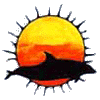|
Osrodek Szkolno-Wychowawczy dla Dzieci Slabowidzscych im. dr Zofii Galewskiej ul. Kozminska 7 0-448 Warszawa Poland Tel./Fax: (48)(22) 621-6844 |
CLICK PICTURE FOR LIST OF SCHOOLS... |
|
Osrodek Szkolno-Wychowawczy dla Dzieci Slabowidzscych im. dr Zofii Galewskiej ul. Kozminska 7 0-448 Warszawa Poland Tel./Fax: (48)(22) 621-6844 |
CLICK PICTURE FOR LIST OF SCHOOLS... |
| NMR
Presentation:
27 April 2000 Met with high school students from the 9th, 10th, and 11th grades School Information: |
School
Contacts:
Mgr. Ewa Krynska
Anne Crowley
Jolanta Grabowska
|
| Named for the famous ophthalmologist-philanthropist, dr Zofii Galewskiej, Osrodek Szkolno- Wychowawczy dla Dzieci Slabowidzscych, was founded in 1950 as a government school for partially sighted children of normal intelligence. It has changed over the years and now consists of a primary and gymnasium (junior high) for low vision students with normal and low IQ’s and a high school (vocational) that prepares students for office work. There are 180 students from Warsaw and northern Poland. The school also has a dorm where 100 students live. | |
|
Osrodek Szkolno- Wychowawczy dla Dzieci Slabowidzscych has begun to integrate its student body. It now accepts students without vision problems. These students often have special needs and function better in smaller classroom settings. Average class size throughout the school is 6 to 11 students. On average 20-30% (2-3 students) from each graduating class go on to college. Osrodek Szkolno- Wychowawczy dla Dzieci Slabowidzscychl is located in the Powisle district of Warsaw. The district consists mainly of elderly residents, many living alone. There are large areas for recreation by the Wistula River. The local government has formed plans to develop this area. It is close to historic Lazienki Park. |
Students with Pan |
|
The school is very active in its attempts to more fully integrate and expose its students to the community at large and in Europe. Examples of this include: |
|
|
|
Students, in black, and Ewa Krynska moments before the annual matriculation exams |
|
|
|
|
Osrodek Szkolno- Wychowawczy dla Dzieci Slabowidzscych is currently seeking grants to establish a rehabilitation room. Funds are needed to remodel windows to improve lighting, painting (paint and labor) an electric stove, food for cooking, cleaning supplies, teachers and staff time. Thanks to PCV Anne Crowley for organizing the NMR visit to Osrodek Szkolno- Wychowawczy dla Dzieci Slabowidzscych. Thank you Mgr. Ewa Krynska for your warm welcome and for facilitating the New Millennium Ride presentations. Finally, thank you Mgr. Anna Biernacka, for inviting NMR into your geography class. |
Students gather after class - questions and courage |
